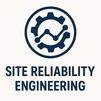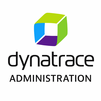
The AWS Certified Developer – Associate Training provides comprehensive knowledge of developing and maintaining AWS-based applications. It focuses on key concepts such as serverless computing with AWS Lambda, secure coding practices, API integration, and database management using DynamoDB and RDS. Participants learn to leverage Elastic Beanstalk, CloudFormation, and CI/CD pipelines for efficient deployment. Designed for software professionals and cloud developers, the course strengthens expertise in AWS core services and prepares candidates to excel in the AWS Developer Associate certification exam.
AWS Certified Developer Training Interview Questions Answers - For Intermediate
1. What are AWS Regions and Availability Zones, and why are they important?
AWS Regions are distinct geographical areas containing multiple isolated locations called Availability Zones (AZs). Each AZ operates independently with its own power and networking to ensure high availability and fault tolerance. Deploying applications across multiple AZs within a region enhances resilience, minimizes latency, and ensures business continuity during infrastructure failures.
2. How does AWS handle credentials securely for applications running on EC2 instances?
AWS manages credentials for EC2 instances through IAM Roles assigned to instances. These roles provide temporary security credentials that applications can access via the instance metadata service. This eliminates the need to store access keys in code or configuration files, reducing security risks while enabling secure access to AWS resources.
3. What are AWS Step Functions and how do they support application workflows?
AWS Step Functions help developers build and orchestrate serverless workflows by coordinating multiple AWS services into a single flow. Each step in the workflow performs a task such as invoking a Lambda function or running an ECS task. Step Functions provide state management, retries, and parallel execution, enabling reliable automation of complex business processes.
4. How can AWS SDKs improve application performance and reliability?
AWS SDKs enhance performance and reliability by providing optimized libraries for making service calls, managing retries, and handling throttling errors. They abstract away API complexities, automatically manage request signing and pagination, and offer built-in caching mechanisms. This improves efficiency while reducing the likelihood of connectivity or timeout issues in distributed applications.
5. What is the difference between SNS and SQS?
Amazon SNS (Simple Notification Service) is a publish-subscribe messaging system that pushes messages to multiple subscribers simultaneously, such as email, Lambda, or SQS queues. Amazon SQS (Simple Queue Service) is a pull-based message queue that decouples components by storing messages until they are processed. SNS is suited for broadcasting, while SQS is ideal for message queuing and asynchronous task handling.
6. Explain the use of AWS CloudTrail in application monitoring.
AWS CloudTrail records and monitors all API activity within an AWS account, providing a detailed audit trail of user actions and service interactions. Developers use CloudTrail for troubleshooting, compliance verification, and detecting unauthorized access. Its integration with CloudWatch and S3 allows secure storage and real-time analysis of activity logs.
7. What is the purpose of Amazon Cognito in application development?
Amazon Cognito provides authentication, authorization, and user management for web and mobile applications. It allows users to sign in via social identity providers or corporate directories. Cognito also issues temporary AWS credentials for accessing other services securely. This enables developers to add scalable identity management without building authentication systems from scratch.
8. How does AWS SAM simplify serverless application development?
The AWS Serverless Application Model (SAM) is an open-source framework for building and deploying serverless applications. It extends AWS CloudFormation to simplify defining functions, APIs, and permissions in a concise syntax. SAM CLI also allows local testing and debugging of Lambda functions, accelerating development cycles and ensuring consistent deployments.
9. How can caching be implemented to optimize AWS applications?
Caching can be implemented using Amazon ElastiCache, which supports Redis and Memcached engines. By storing frequently accessed data in memory, it reduces database load and improves application responsiveness. Additionally, integrating CloudFront as a content delivery network (CDN) helps cache static assets closer to end users, enhancing global performance.
10. What are environment variables in AWS Lambda, and why are they used?
Environment variables in AWS Lambda store configuration settings such as database connection strings, API keys, or file paths. These variables enable separation of code and configuration, allowing developers to modify environment-specific values without redeploying functions. They enhance security when used with AWS KMS for encrypted sensitive data.
11. What are some best practices for writing efficient AWS Lambda functions?
Efficient Lambda functions follow best practices like minimizing dependencies, reusing execution contexts, and optimizing memory allocation for cost-performance balance. Logging and monitoring should be enabled through CloudWatch, and asynchronous invocations should use error handling mechanisms. Using AWS SDK clients outside the handler improves cold-start performance and reduces execution time.
12. How does AWS handle application versioning in services like Lambda and API Gateway?
AWS supports versioning by allowing developers to publish immutable versions of Lambda functions and link them to aliases. This ensures stable deployments and controlled rollouts. Similarly, API Gateway allows multiple stages (such as dev, test, and prod), enabling smooth updates and rollback mechanisms without disrupting live traffic.
13. Explain the importance of AWS KMS in application security.
AWS Key Management Service (KMS) manages cryptographic keys for encrypting data in AWS services. It provides centralized control over key creation, rotation, and access policies. KMS integrates with services like S3, EBS, and RDS, ensuring data-at-rest encryption. It enhances compliance by offering audit logs and secure, automated encryption processes.
14. What is the difference between EC2 Auto Scaling and AWS Auto Scaling?
EC2 Auto Scaling focuses specifically on automatically adjusting the number of EC2 instances based on metrics such as CPU usage or request rates. AWS Auto Scaling, however, extends this concept to multiple services like DynamoDB, ECS, and Aurora. It provides a unified approach to scaling across application components for optimized performance and cost efficiency.
15. How do developers manage application secrets securely in AWS?
Developers use AWS Secrets Manager or AWS Systems Manager Parameter Store to manage sensitive data such as passwords, tokens, and API keys. These services encrypt secrets using KMS and allow secure retrieval through IAM policies. Automated rotation of credentials further enhances security while reducing manual management overhead.
AWS Certified Developer Training Interview Questions Answers - For Advanced
1. How does AWS achieve global application distribution and low-latency performance using CloudFront?
Amazon CloudFront is a globally distributed content delivery network (CDN) that accelerates the delivery of web content, APIs, and streaming media by caching data at edge locations across the world. When a user makes a request, CloudFront routes it to the nearest edge location using the AWS global network backbone, reducing latency and improving response times. It integrates seamlessly with S3, EC2, and Elastic Load Balancing, enabling dynamic as well as static content caching. CloudFront also supports Origin Shield for optimizing cache hierarchy and offers built-in DDoS protection through AWS Shield. This architecture allows developers to deploy globally distributed applications that deliver consistent and secure user experiences regardless of geographical distance.
2. How can developers design fault-tolerant microservices on AWS?
Fault-tolerant microservices on AWS are designed through isolation, redundancy, and automation. Each microservice is deployed across multiple Availability Zones to prevent single points of failure. Load balancers distribute traffic, while Auto Scaling maintains healthy instances under variable loads. Stateless services combined with stateful storage like DynamoDB or RDS Multi-AZ clusters ensure data persistence even during compute failures. AWS Step Functions or SQS queues handle retries and asynchronous communication to prevent cascading failures. Logging via CloudWatch and tracing with X-Ray enhance visibility, while AWS CodeDeploy supports Blue/Green deployments to mitigate downtime during updates. Together, these elements form a resilient system that can self-heal and recover automatically.
3. What mechanisms does AWS provide for cross-region disaster recovery?
AWS supports cross-region disaster recovery (DR) through replication and failover strategies. Services like Amazon S3 offer cross-region replication (CRR) to automatically duplicate data between regions, while RDS supports cross-region read replicas for database redundancy. Route 53 enables DNS-based failover routing, redirecting traffic to secondary regions during outages. For infrastructure replication, CloudFormation templates can recreate the entire environment elsewhere quickly. Multi-region active-active architectures use global load balancing and DynamoDB Global Tables to maintain real-time data synchronization, ensuring both high availability and business continuity. AWS Backup and Elastic Disaster Recovery further simplify backup orchestration and workload restoration across regions.
4. How does Amazon Kinesis handle real-time data streaming and analytics?
Amazon Kinesis is designed for high-throughput, low-latency real-time data streaming. It allows applications to ingest massive data streams such as clickstreams, IoT telemetry, or logs from thousands of sources simultaneously. Kinesis Data Streams shards incoming data for parallel processing and stores it durably across multiple Availability Zones. Kinesis Data Firehose automatically delivers streaming data to destinations like S3, Redshift, or Elasticsearch, while Kinesis Data Analytics enables SQL-based stream processing in real time. This architecture allows developers to build event-driven analytics systems that process, transform, and visualize data within seconds of generation, making it ideal for monitoring, personalization, and predictive analytics.
5. How does Amazon Aurora differ from traditional relational databases in terms of architecture and performance?
Amazon Aurora is a cloud-native relational database designed for performance and availability. Unlike traditional databases that rely on local storage, Aurora separates compute and storage layers. The storage engine replicates data across six copies spanning three Availability Zones, automatically healing corrupt blocks and rebalancing partitions without manual intervention. Aurora’s log-structured distributed storage system allows high concurrency and faster crash recovery. It offers up to five times the performance of MySQL and three times that of PostgreSQL on equivalent hardware. Features like serverless scaling, read replicas, and Global Database replication make Aurora suitable for enterprise-grade applications demanding elasticity and minimal operational overhead.
6. How does AWS handle encryption key management and lifecycle security using KMS?
AWS Key Management Service (KMS) provides centralized control for encryption key creation, rotation, and access management. Each key is protected by a hierarchical structure involving customer-managed keys (CMKs) and AWS-managed keys. KMS integrates with numerous AWS services like S3, EBS, RDS, and Lambda to provide automatic encryption at rest. Developers can define key policies to limit usage and grant temporary access via AWS STS. Automatic key rotation ensures compliance with security policies, while AWS CloudTrail logs all key operations for auditability. By offloading encryption management to a secure and compliant service, organizations maintain strict control over data confidentiality and integrity.
7. Explain how AWS EventBridge enhances event-driven application design.
Amazon EventBridge builds upon the principles of event-driven architecture by providing a serverless event bus that connects applications, services, and SaaS products through events. It uses schemas and event rules to route messages dynamically to appropriate targets, such as Lambda, Step Functions, or SQS. EventBridge supports schema discovery, reducing the need for manual event definition and improving developer productivity. Unlike SNS or SQS, it enables filtering and transformation of event payloads natively. With multiple event buses and fine-grained permissions, EventBridge simplifies complex integrations while ensuring real-time, decoupled communication across microservices.
8. How does AWS manage network security for applications deployed in a VPC?
AWS Virtual Private Cloud (VPC) provides network-level isolation for resources, offering full control over IP addressing, subnets, and routing. Security is enforced through multiple layers: security groups act as virtual firewalls for instances, network ACLs control subnet-level traffic, and VPC Flow Logs capture traffic details for monitoring. Developers can use PrivateLink and VPC endpoints to access AWS services securely without traversing the public internet. Additionally, AWS Network Firewall and Transit Gateway centralize network policy enforcement and inter-VPC communication. Combined, these tools create a multi-layered security architecture that meets stringent compliance requirements.
9. How does AWS optimize application performance using caching layers?
AWS optimizes application performance through multiple caching layers—application-level caching using ElastiCache, content delivery via CloudFront, and database query caching through RDS. ElastiCache, powered by Redis or Memcached, stores frequently accessed data in memory, reducing latency and offloading backend databases. CloudFront distributes cached web content globally, minimizing round-trip times for end-users. Database read replicas complement caching by distributing query loads. Developers can further optimize application responsiveness using API Gateway caching to store frequently invoked API responses. Together, these caching mechanisms create a hierarchical acceleration structure that reduces cost and enhances scalability.
10. How does AWS enable secure, efficient CI/CD automation for multi-account environments?
In multi-account environments, AWS enables CI/CD automation through cross-account roles, centralized pipelines, and secure artifact storage. CodePipeline orchestrates the CI/CD process, while CodeBuild and CodeDeploy handle build and deployment stages. Cross-account IAM roles ensure that pipelines in a management account can deploy securely into target environments. Artifacts are stored in S3 with encryption and fine-grained access control. AWS Control Tower and Organizations enforce consistent security baselines across accounts. This approach isolates workloads, supports governance, and enables secure, large-scale DevOps automation.
11. How can developers improve Lambda cold start performance in high-throughput systems?
Reducing Lambda cold start latency involves optimizing both configuration and code. Provisioned Concurrency keeps function instances pre-initialized and ready to handle requests immediately. Minimizing deployment package size, avoiding large dependencies, and initializing external clients outside the handler reduce startup time. Using lighter runtimes like Node.js or Python improves initialization speed. For VPC-enabled Lambdas, attaching to subnets with pre-warmed ENIs significantly reduces connection setup delays. Monitoring cold starts through CloudWatch metrics allows further fine-tuning. These strategies collectively ensure that latency-sensitive applications such as APIs and stream processors remain highly responsive.
12. How does AWS ensure secure data access across hybrid architectures?
AWS supports hybrid security through a combination of encryption, identity federation, and network controls. Direct Connect or VPN connections provide private, encrypted communication channels between on-premises data centers and AWS VPCs. IAM roles and SAML federation extend on-premises identity management to cloud applications, allowing unified authentication. Services like AWS Directory Service and AWS Single Sign-On simplify user access management across hybrid systems. Data is secured with KMS encryption both in transit (using TLS) and at rest. This architecture ensures seamless yet secure integration of hybrid workloads across environments.
13. How does AWS Lambda handle concurrency limits and throttling?
Lambda enforces concurrency limits at both the account and function levels to prevent resource exhaustion. When concurrent executions exceed the configured limit, additional invocations are throttled—either queued (for asynchronous requests) or rejected (for synchronous ones). Reserved Concurrency ensures that critical functions always retain a fixed portion of concurrency capacity, preventing starvation by other workloads. Concurrent execution metrics can be monitored in CloudWatch, and adjustments can be made using auto-scaling or asynchronous design patterns. Managing concurrency effectively ensures predictable performance and cost efficiency in large-scale deployments.
14. How can developers use AWS X-Ray for distributed tracing in microservices?
AWS X-Ray traces user requests across distributed applications, providing visibility into latency and dependency chains. It captures trace data such as API calls, database queries, and downstream service interactions, allowing developers to identify bottlenecks or errors. X-Ray integrates with Lambda, API Gateway, and ECS, automatically generating a service map that visualizes inter-service communication. Traces can be filtered by user, latency, or error rate to diagnose performance issues. When combined with CloudWatch logs, it delivers a holistic observability framework that enables efficient debugging of complex, event-driven microservices architectures.
15. How does AWS facilitate cross-service automation using Step Functions and EventBridge together?
Step Functions and EventBridge together enable powerful cross-service orchestration. Step Functions define the workflow logic—sequencing, retries, and parallelization—while EventBridge acts as the communication backbone by routing events between services. For example, when a new object is added to S3, EventBridge triggers a Step Functions workflow to process, validate, and store metadata in DynamoDB. This combination allows for decoupled, modular architectures where each component reacts to events independently. Error handling and retry mechanisms within Step Functions ensure reliability, while EventBridge’s schema registry simplifies integration across heterogeneous systems.
Course Schedule
| Dec, 2025 | Weekdays | Mon-Fri | Enquire Now |
| Weekend | Sat-Sun | Enquire Now | |
| Jan, 2026 | Weekdays | Mon-Fri | Enquire Now |
| Weekend | Sat-Sun | Enquire Now |
Related Courses
Related Articles
Related Interview
- Workday HCM Interview Questions Answers
- Primavera P6 Training Interview Questions Answers
- SAP Condition Contract Management Training Interview Questions Answers
- Microsoft Certified Cybersecurity Architect Expert SC-100 Training Interview Questions Answers
- SAP Financials and SAP Accounting Training Interview Questions Answers
Related FAQ's
- Instructor-led Live Online Interactive Training
- Project Based Customized Learning
- Fast Track Training Program
- Self-paced learning
- In one-on-one training, you have the flexibility to choose the days, timings, and duration according to your preferences.
- We create a personalized training calendar based on your chosen schedule.
- Complete Live Online Interactive Training of the Course
- After Training Recorded Videos
- Session-wise Learning Material and notes for lifetime
- Practical & Assignments exercises
- Global Course Completion Certificate
- 24x7 after Training Support











 Join our Live Instructor-Led online classes delivered by industry experts
Join our Live Instructor-Led online classes delivered by industry experts